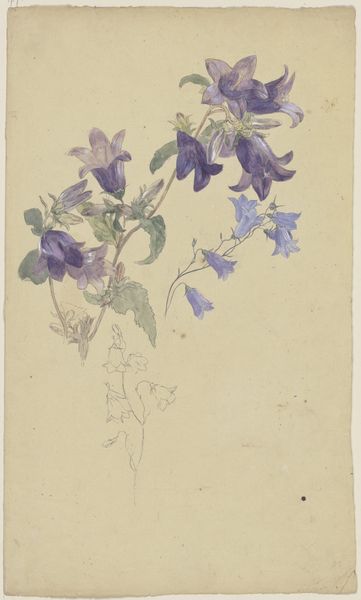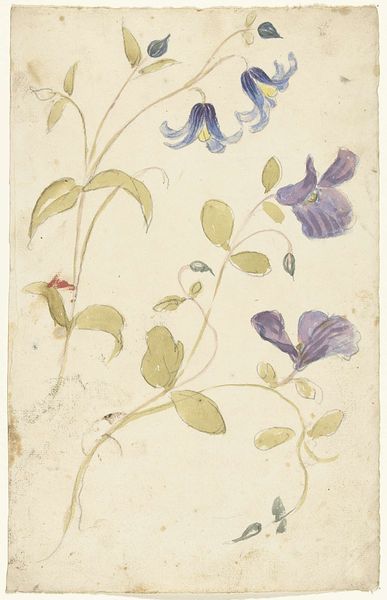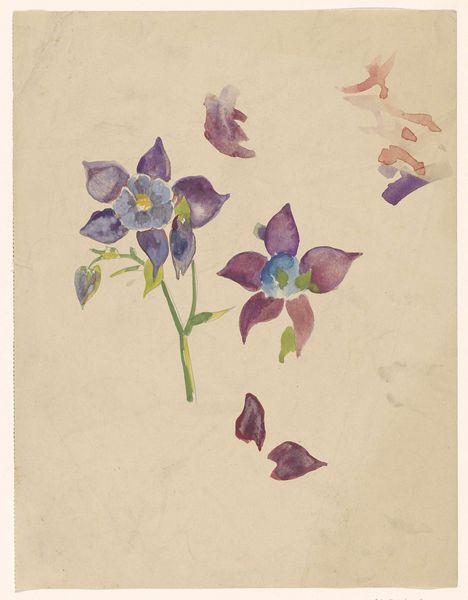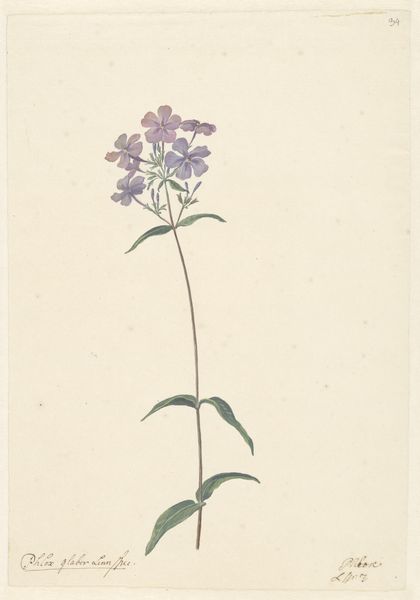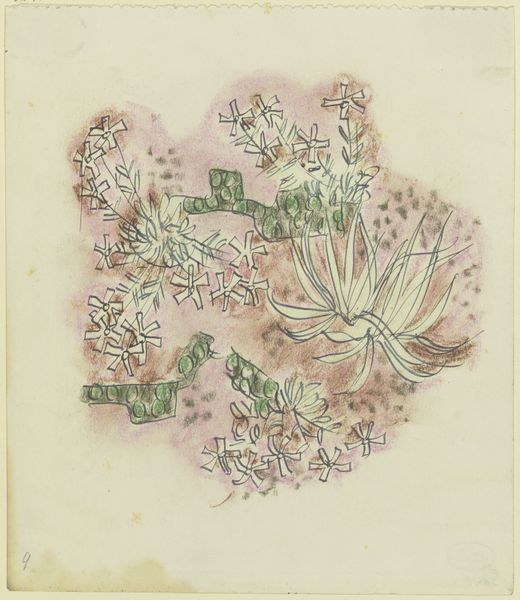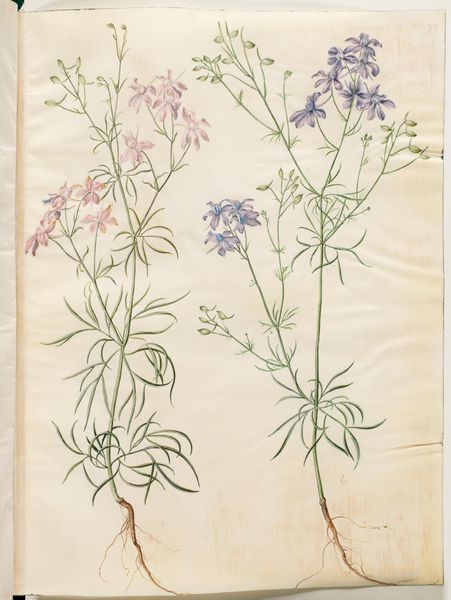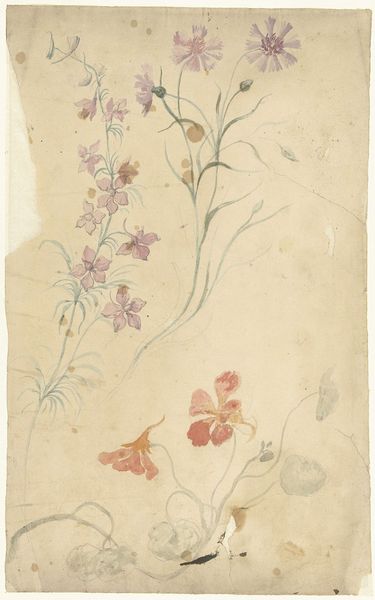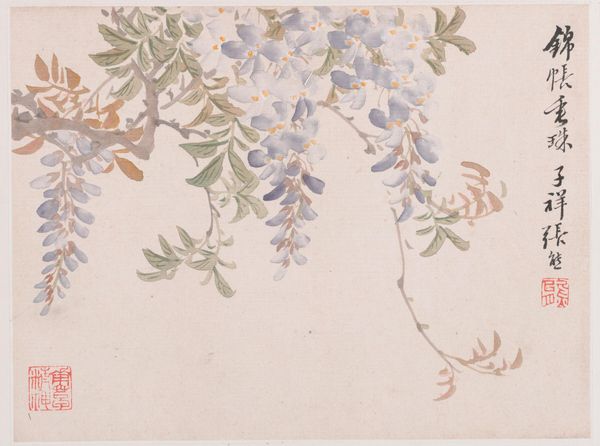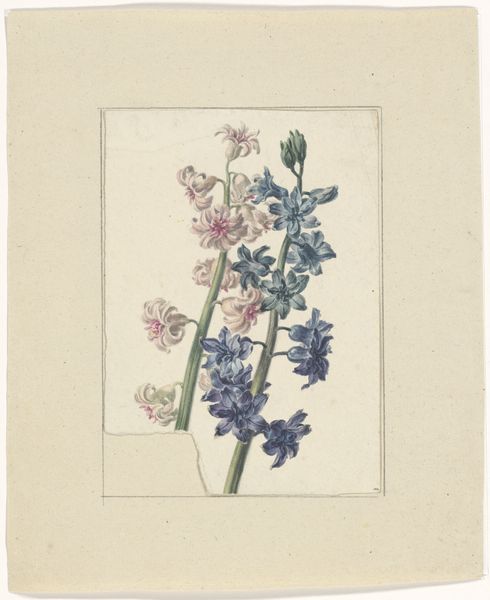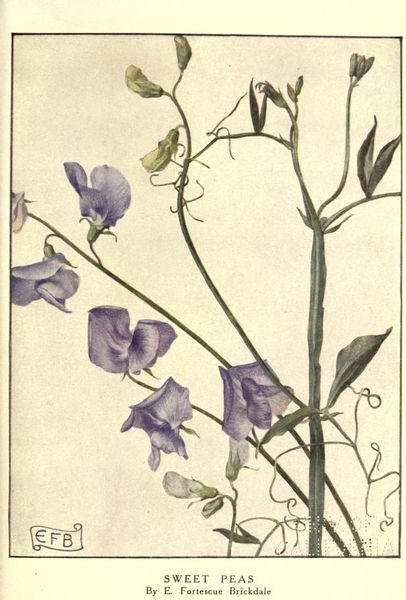
Dimensions: height 201 mm, width 146 mm
Copyright: Rijks Museum: Open Domain
Editor: Here we have Carel Adolph Lion Cachet’s “Wisteria,” made sometime between 1874 and 1945. It’s a watercolor painting, and it strikes me as very delicate, almost like a botanical study. What compositional elements stand out to you? Curator: The chromatic restraint is immediately evident. Note the restricted palette: primarily blues and greens, deployed with an almost scientific detachment. The subtle gradations of tone serve to delineate form without resorting to dramatic chiaroscuro. Consider the placement of the wisteria blossoms; they're distributed across the paper with calculated asymmetry, disrupting any sense of conventional balance. What effect does this calculated asymmetry create? Editor: I suppose it makes it feel more organic, less staged? Curator: Precisely. The asymmetry works against a purely representational reading, pushing the work towards abstraction. Furthermore, observe the artist's mark-making: delicate, precise strokes juxtaposed with looser, more gestural washes. There is an interplay of precision and spontaneity, of control and release, that defines the formal dynamic of this work. The use of toned paper flattens the perceived depth of field and amplifies the subtle tonal contrasts. Editor: It’s interesting how those details, which might seem accidental, are actually carefully chosen for their visual effect. I thought this was just a simple flower painting, but I see there’s more going on with the forms themselves. Curator: Exactly. Focusing on these qualities, one appreciates the intention. I see now that one might enjoy Cachet's composition through formal analysis. It's been quite revealing.
Comments
No comments
Be the first to comment and join the conversation on the ultimate creative platform.
